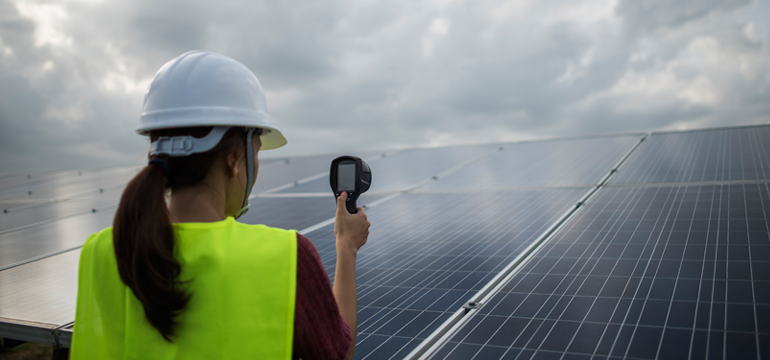430 quintillion Joules of energy from the sun hit the earth every hour. That’s more energy than the entire planet consumes in a year. With access to such an abundance of clean energy, a transition to solar energy is inevitable. Countries like the U.S., China, India, Japan, Germany have already made the leap and are generating huge amounts of energy using solar for a few years now. In the coming years, most of the world is expected to use renewable as the core resources to generate electricity.
With an increase in the demands of solar power, installations have grown exponentially. More and more companies are realizing the potential of solar energy and making the shift. The panels are installed in different parts of the world and hence the efficiency of panels differs from region to region.
There are many problems that occur in a solar panel. Some of them are common irrespective of the region and some of them are dependent on the region they are installed in. The most common problem that is seen in solar panels irrespective of the region are:
- Hot spots on the panels
- Micro-cracks
- Snail trail contamination
- Potential Induced Degradation PID Effect
- Internal corrosion, delamination
Problem faced in hot regions
It is a common misconception that the stronger the sunlight the greater the generation of power by solar panels, but that isn’t true. Temperature affects all electronics, and solar panels are no exception. As the temperature rises, the panels generate less voltage and become less efficient in producing electricity.
To know the temperature at which the efficiency of the solar panel drops, we calculate the temperature coefficient. It tells us how much power the panel will lose when the temperature rises by 1 degree Celsius at Standard Test Condition (STC).
For example, the temperature coefficient of a solar panel is -0.258% per degree Celsius. So, for every degree rise, the maximum power of the solar panel will fall by 0.258% and for every degree fall it will increase by the same percentage. This means, no matter where you are, your panels will be affected by seasonal variation and also that solar panels are more efficient in cooler temperature.
Here are some ways to reduce the effects of the heat:
- Move components like inverter and combiner into the shaded area behind the array
- Install the panels a few inches above the roof so the airflow can cool the panel
- Ensure that the panels are constructed by light colour material, to reduce heat absorption
Problem faced in cold regions
Colder regions are not suitable for solar power generation is a common misunderstanding people have, but that is not accurate. Solar panels use daylight energy to generate electricity, they do not need direct sunlight. Thus, today’s panels are designed to capture different parts of the solar spectrum using a system of lenses and mirrors. These technological advancements have enabled us to harness solar energy in colder climates as well.
Many might not know but solar energy is a highly dependable form of energy in colder regions. The efficiency of panels in these regions is better than that in the hotter regions, as we derived in the previous section. But these areas have their own drawbacks. Here are some common problems faced in solar power generation in a cold region.
- The angle of the solar panel may need adjustment to capture more light
- Cleaning of snow that completely covers the panels and blocks the light
- Short days and clouds also reduce the amount of sunlight
Some of these hurdles like the accumulation of snow on the panel and the adjustment of panels for exposure to maximum light can be easily solved using a few methods, while the solution of natural occurring hurdles is not in our hands.
If you have panels in a region where it rains a lot, the rainfall itself will not have any impact on the panels but the rain cloud will likely lower your production. However, a rainstorm could be good for your production as it would clean the layer of dust or dirt covering the solar panel and blocking the light.
Even though solar energy is dependent on the sun, with the current technological advancements in the industry, it is possible for homes, businesses and farms to install and harness the power of solar if they are located in cloudy, snowy and rainy areas.
Sources – https://www.businessinsider.com/this-is-the-potential-of-solar-power-2015-9
https://blog.greensolver.net/en/the-five-most-common-problems-with-solar-panels/
https://www.paradisesolarenergy.com/blog/how-does-weather-affect-solar-panels-production
https://www.cedgreentech.com/article/how-does-heat-affect-solar-panel-efficiencies
https://www.sunrun.com/go-solar-center/solar-articles/do-solar-panels-work-in-cold-weather

